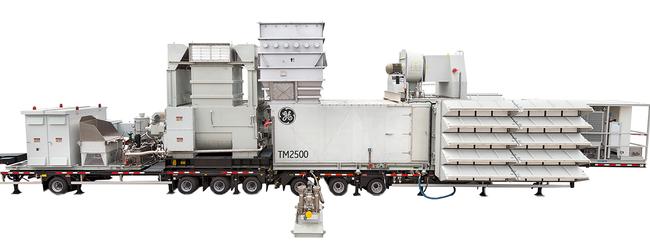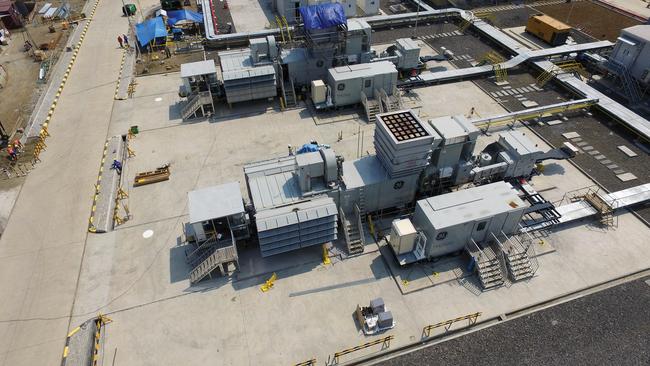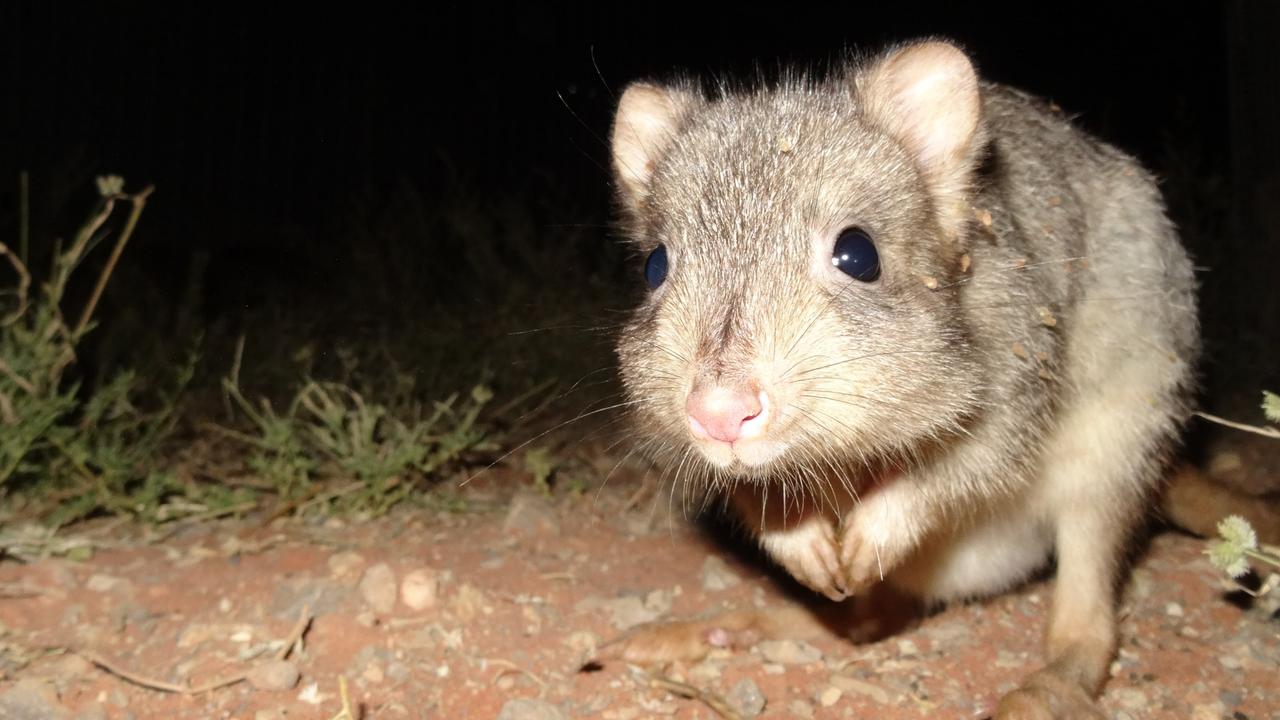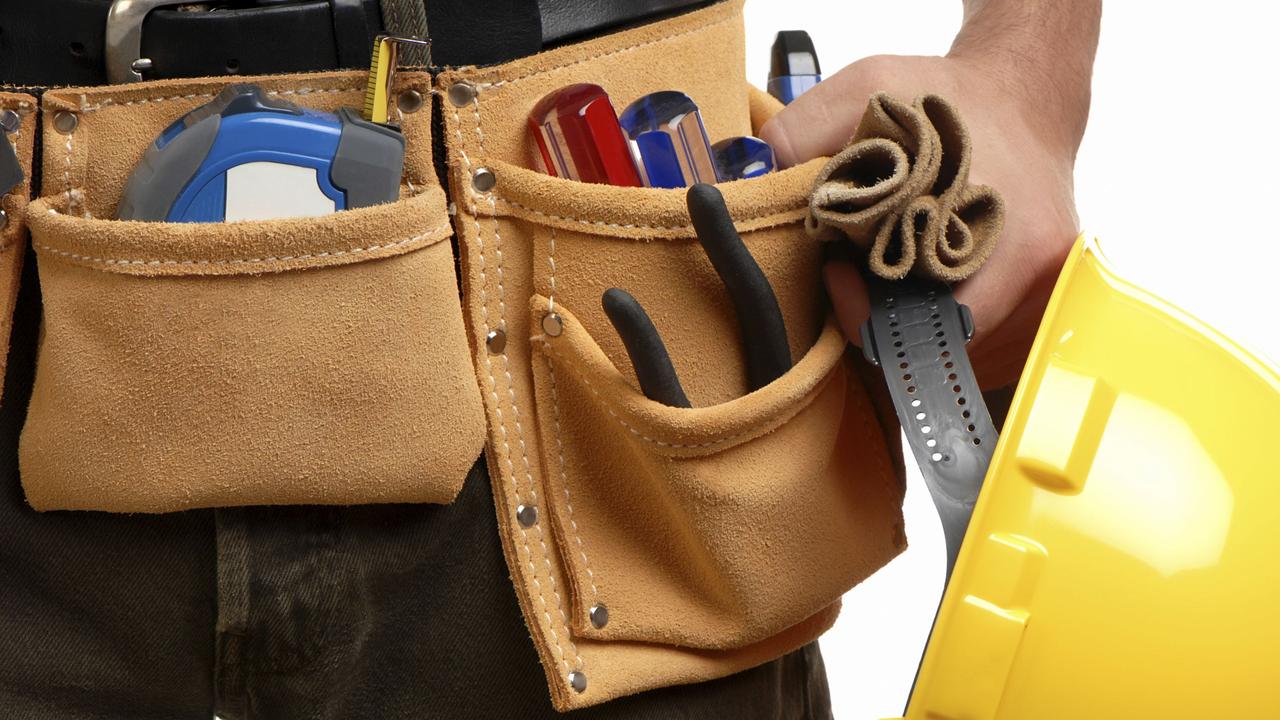State Government to purchase hybrid turbines to generate 276MW of electricity which will be installed before start of summer
THE Premier’s plan to turn temporary diesel generators into a permanent gas-fired power station is a “clever technical solution” to an energy crisis SA should never have had to face, an energy expert says.
SA News
Don't miss out on the headlines from SA News. Followed categories will be added to My News.
- Government unveils $550m power plan
- Power station won’t be ready for summer
- Elon Musk’s Tesla to build SA’s giant battery
- Power Dossier — What you need to know
PREMIER Jay Weatherill’s plan to turn temporary diesel generators into a permanent gas-fired power station is a “clever technical solution” to an energy crisis SA should never have had to face, a leading energy expert says.
Mr Weatherill has announced plans to lease, and possibly later buy, nine new turbines which can run off either diesel or gas, and provide the state up to 276MW of energy in times of emergency.
The hybrid diesel-gas generators, will be housed at Holden’s Elizabeth factory after it closes and alongside the mothballed Adelaide desal plant.
They are expected to be installed by the Government’s December 1 deadline — and Labor hopes they will reduce the risk of any summer blackouts in the months before the March state election.
Mr Weatherill said it was expected they would remain there for two years, running on diesel, before being combined at another site and run permanently on gas once a location and infrastructure were ready.

When the state suffered forced blackouts in February, wind and solar supplies dipped sharply as a privately owned gas station stayed switched off.
Mr Weatherill, who has promoted the Government’s credentials as a champion of renewable energy, has previously said he made no apologies for turning to “dirty” diesel generators as a temporary fix.
Mineral Resources and Energy Minister Tom Koutsantonis said the Government would only turn its generators or power station on when the market was not able to produce enough power.
It was critical the Government only intervene in those extreme circumstances, because becoming a regular competitor in the market would discourage private companies from building their own new plants, he said.
Mr Koutsantonis estimated the new generators would have been used three times last summer, if available.
Grattan Institute energy program director Tony Wood told The Advertiser he feared the State Government was seeking to solve a problem that should have never occurred in the first place, and at high cost.
The Government says the generators will be paid for from an existing $550 million energy plan budget, but has not made details public.
Mr Wood said that many private investors would be fearful that a future government or minister would run the state-owned station for profit, as occurs in Queensland, making prices higher for consumers in the long-term.
“Technically, it is very clever,” he said. “It means you don’t have to hire the diesel, get rid of it, and then start with the gas-fired power station.
“My concern is that we still need to reflect on why the hell governments found themselves in a situation where they had to do this at all.”

Mr Wood said the prospect of a state-owned power station would “spook” the market, as it feared a future government would use it to spin a profit.
“Governments have a horrible conflict of interest in this space,” Mr Wood said.
He added the best solution was for federal climate and energy policy to be combined, which would unlock private spending on new generation.
Mr Weatherill will first lease the generators, but has an option to later buy them. He says he strongly expects the Government will exercise the purchase option.
Opposition Leader Steven Marshall said the Government planned to spend more than half a billion dollars trying to fix a problem its failed policies had created in the first place.
“That would never have been required if we’d kept the Port Augusta power station operational,” he said. “If they spent as much energy getting the plan right as on the $2.6 million advertising spend, SA wouldn’t have the highest energy prices in the world.”
Mr Weatherill said “SA’s long-term back-up power plant will be installed before this summer”, cutting the risk of further blackouts.
Mr Koutsantonis said the turbines were “state-of-the-art, brand new generators”.
“These start very, very quickly. Like a jet engine,” he said.
Mr Koutsantonis said it was unclear if the Government would be paid for the energy produced.
He said there may be a payment in circumstances where the power station was a last resort to stop forced blackouts, and any profits would be fed back into the cost of plant operations.
Mr Koutsantonis said it would also increase stability in the state energy grid.
Mr Weatherill said the Government was also poised to soon announce the outcome of its bulk buy electricity contract, which is expected to spark to construction of a new private power plant.
The turbines generate up to 34MW of electricity each, and can be installed within 11 days to “help generate back up power during natural disaster relief, plant shutdowns or grid instability” according to the company’s website.
The Indonesian Government purchased similar turbines to generate up to 500MW across eight different sites in the Indonesian Archipelago.
More than 200 TM2500 turbines are deployed around the world, GE say.
THE $550M PLAN TO SOLVE SA’S POWER CRISIS
The Government’s six-point plan to provide energy security for SA involves:
BUILDING a State Government-owned, fast start gas-fired power station that can come on when the market does not provide enough energy to keep the lights on. It is expected to cost about $360 million. No site has yet been selected. It would be 250MW, enough to deliver close to 10 per cent of SA’S peak demand.
SUPPORTING construction of the biggest battery in Australia — and possibly the world — as part of a $150 million spend on a new renewable technology fund.
ENCOURAGING the construction of a new privately-owned power station using a Government bulk buy power contract.
INCENTIVISING the extraction of more gas for use in SA power stations, through a taxpayer-backed exploration fund.
GIVING the SA energy minister powers to override other regulators and force power stations to fire up in times of need.
CREATING an “energy security target”, which requires retailers to buy 36 per cent of their power from baseload sources in SA.
THE PLANS — AND WHERE THEY’RE AT
STATE POWER STATION
The plan: Build a taxpayer-funded and owned fast-start gas-fired power station that could come on when the market failed to deliver the power needed to keep the lights on. It was to deliver 250MW and cost about $360 million. Temporary generation was needed until it was built.
The result: Yesterday’s announcement moves to kill two birds with one stone. The nine new turbines contracted by the Government will run temporarily on diesel at two sites, before being grouped together after about two years to run as one gas-fired power station. The cost has not been revealed, but Mr Weatherill says they are under budget. The combined power that can be generated by the turbines is 276MW, more than was originally planned.
BIG BATTERY
The plan: Support construction of the biggest battery in Australia, to stabilise the grid and deliver back-up power, as part of a $150m spend on a renewable technology fund.
The result: Billionaire Elon Musk will build the world’s biggest battery near Jamestown. The Government says the 100MW battery can deliver grid stability and some backup power.
PRIVATE POWER STATION
The plan: Encourage the building of a new, privately owned power station, using a Government bulk buy power contract, to bring an extra player and new competition into the market.
The result: A winner of the contract is expected to be announced soon, with suggestions including the construction of a new solar-thermal plant at Port Augusta.
MORE GAS
The plan: Incentivise the extraction of more gas for use in SA power stations, through a taxpayer-backed exploration fund and increasing support for fracking.
The result: Early days, but has been backed by the Federal Government and welcomed by industry. Key point of difference with the Liberals, who have promised to put a 10-year ban on fracking in the South East after protests from local farmers and food producers.
SPECIAL POWERS
The plan: Give the SA energy minister powers to override other regulators and force power stations to fire up in times of need or regulate flows on the interconnector to Victoria.
The result: Passed by State Parliament and in place for the coming summer.
SECURITY TARGET
The plan: Create “energy security target”, which requires retailers to buy 36 per cent of their power from baseload sources in SA, increasing the amount of reliable power in the mix.
The result : The start date for the plan has been pushed back six months to January 1, 2018. The Government says this has been done while it awaits clarity about future Federal Government policy and in response to submissions from industry requesting further time to prepare.


